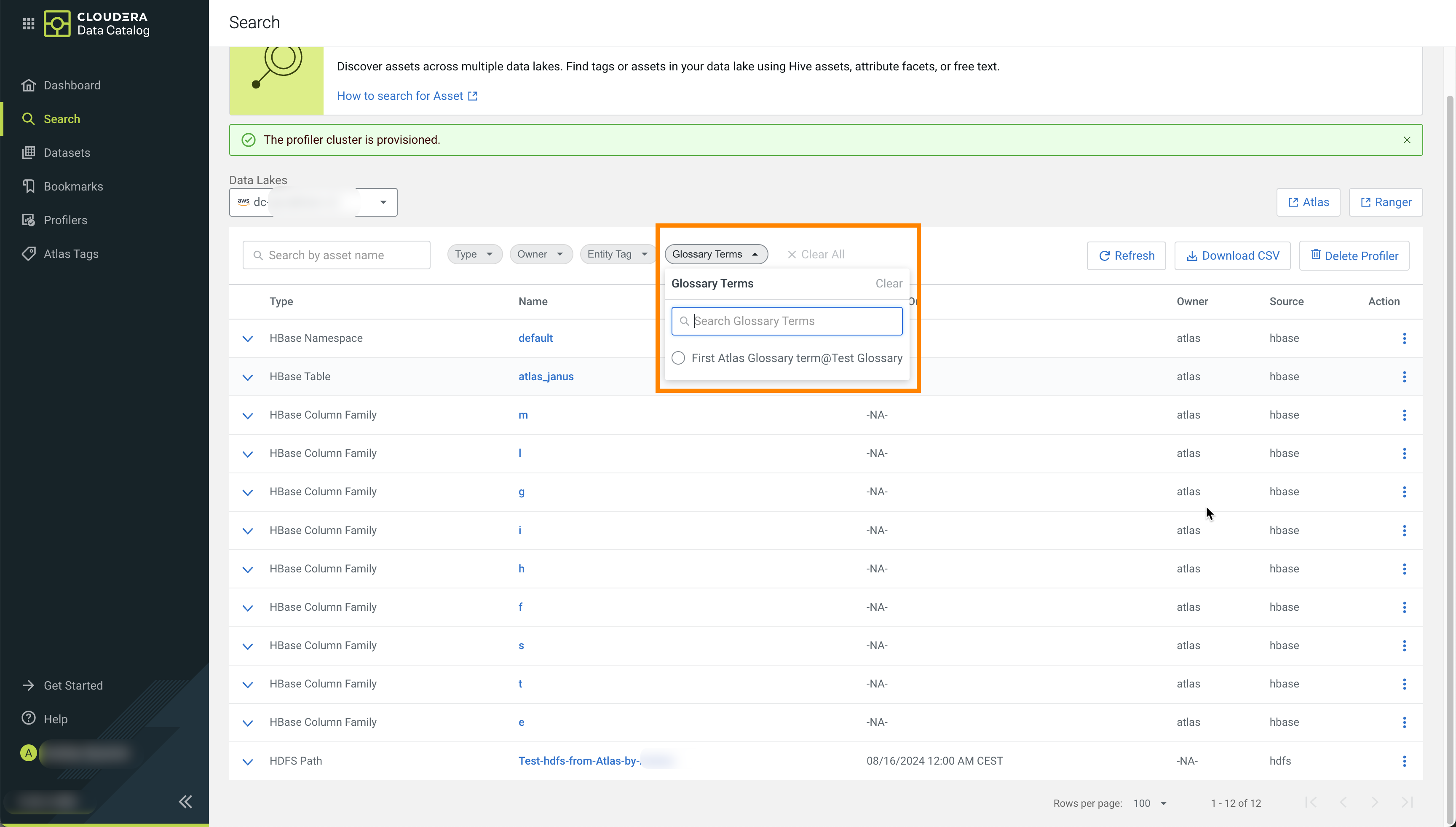Searching for assets using Atlas glossaries
Use Apache Atlas glossaries to define a common set of search terms that data users across your organization use to describe their data.
Data can describe a wide variety of content: lists of names or text or columns full of numbers. You can use algorithms to describe data as having a specific pattern, of being within a range or having wide variation, but what’s missing from these descriptions is what does the data mean in a given business context and what is it used for? Is this column of integers the count of pallets that entered a warehouse on a given day or number of visitors for each room in a conference center?
The glossary is a way to organize the context information that your business uses to make sense of your data beyond what can be figured out just by looking at the content. The glossary holds the terms you’ve agreed upon across your organization so business users can use familiar terms to find what they are looking for.
Glossaries enable you to define a hierarchical set of business terms that represents your business domain.
Glossary terms can be thought of as of a flat (but searchable) list of business terms organized by glossaries. Unlike classifications, terms are not propagated through lineage relationships: the context of the term is what’s important, so propagation may or may not make sense.


